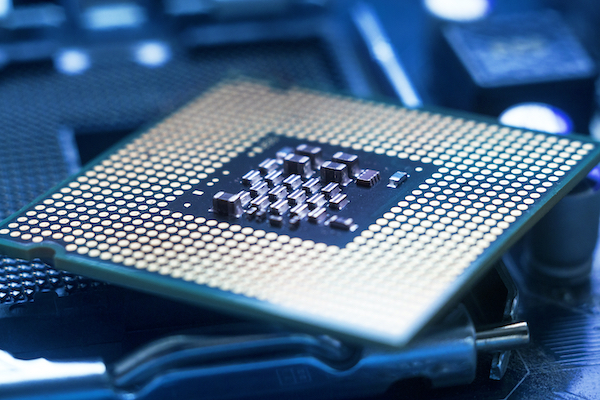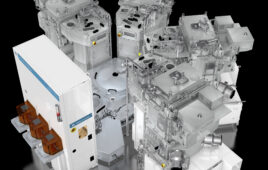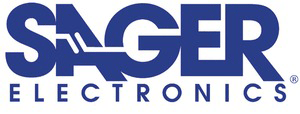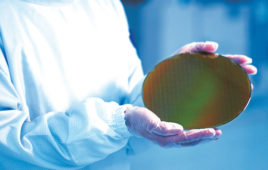Flash storage devices are often selected in the later stages of a design. At that point, many of these devices are simply viewed as commodity items and purchased off-the-shelf. After all, what more is needed to know than type of flash, memory capacity and form factor?

Computer processor lies on the motherboard, technology concept,
But is this always the best way to incorporate storage? Because flash memory is widely available in a variety of form factors, many OEMs assume they can proceed without a custom solution. However, in doing so, OEMs may overlook several considerations that will affect the outcome of a design, for example:
–the frequency of reading and writing large amounts of data to memory,
–power management issues (dirty power, power cycling, power failure)
–environmental conditions (temperature, vibration)
Any of these factors can lead to data corruption and reducing the reliability and lifespan of the flash storage.
“Many industrial OEMs purchase flash storage devices over the internet only to discover at the launch of the product there were unexpected issues due to inaccurate assumptions about the environment and workload requirements,” says Tony Diaz, Product Manager for Delkin Devices.
In the transportation industry, for instance, unexpected failures may compromise safety features that drivers rely upon to prevent accidents. In manufacturing automation, data device failures can cause machinery to malfunction.
Diaz adds that the majority of industrial flash storage solutions require some level of customization to adequately meet workload requirements in real-world industrial scenarios.
Workload demands
Because flash storage has a finite life, extending that life requires careful consideration as to how data are written to the device. New data cannot be saved to a flash device until the old data are first erased. Only a finite number of programming and erasing cycles can be performed before wear renders the flash device unreliable to store data. In addition, some flash media is not used evenly, further reducing the life of the device.

Fortunately, there are options to extend the life of a flash device, including reducing unnecessary copying of files or downloading data, consolidating writes, wear leveling techniques and even selecting whether the data are written sequentially or randomly.
Environmental conditions
Although industrial flash storage is designed to be rugged, different applications have different operating requirements. Customizing the mechanical ruggedness of the storage can alleviate concerns about failures associated with operating conditions.
One of the best ways to ensure that a storage device will work as expected is to partner with a manufacturer who offers testing reliability services.
Power issues
Dirty power, excessive power cycling, and unexpected power failures are common problems for industrial flash storage. Although only a small amount of data may not have been written when a power failure occurs, it can cause ongoing problems, including fatal corruption of the entire system. It can also cause inefficient use of memory capacity, which will shorten the lifespan of the embedded flash storage.
Taking steps to reduce external sources of power loss will mitigate the risk of power fails. However, power failures can still occur, so internal protections will reduce the risk of data loss. These protections include built-in power loss controls, including systems for monitoring power supply and the ability to recover data after a power loss that occurs during a write operation.
Dirty power due to outages, brownouts, surges and power spikes is another concern, especially where dc dips below the required threshold.
And excessive power cycling to conserve battery life can become a problem. In some industries, power may be cycled tens of thousands of times a year to keep the battery in a sleep mode or to power it off altogether. This can degrade the performance of the flash memory.
Operational issues
Operational requirements refer to the manufacturer’s supply chain and how they source parts, engage with suppliers and ensure the parts they source will be available throughout the product lifecycle.
It is common for the bill of materials (BOM) of commercial grade flash storage to be updated without warning, and this is necessary for consumer OEMs because it helps maximize function while minimizing price. For industrial OEMs, however, this approach conflicts with the need for consistency and reliability.
Diaz says there is an even higher standard that can be achieved, which is when the component parts are controlled and “locked.”
“This means that once qualified, the flash, controller and firmware will not change as long as the part number is active. If anything needs to be changed, the part number is changed and that essentially guarantees that the customer is notified and the BOM is updated,” explains Diaz.
Reducing risks
In the short term, off-the-shelf flash storage may have the right specs and cost less than a custom part, but there are always hidden costs and risks.
“Industrial OEMs are often more focused on designing a high-quality product, and so do not spend much time considering flash storage,” says Diaz. “But given the critical nature of data in today’s devices, there is too much risk to take industrial flash for granted.”
Delkin Devices
www.delkin.com
Filed Under: Semiconductor manufacture




